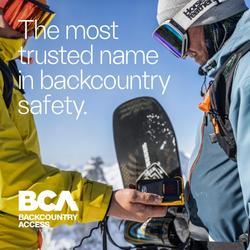Forecast for the Logan Area Mountains

Issued by Toby Weed on
Thursday morning, January 25, 2024
Thursday morning, January 25, 2024
Elevated avalanche conditions exist at all elevations; the danger is MODERATE, and life-threatening human-triggered avalanches are possible. Although natural avalanches are unlikely, people could trigger dangerous slab avalanches up to three feet deep and a couple hundred feet wide, failing on a buried persistent weak layer, especially where the snow is relatively shallow and in steep, previously drifted rocky terrain.
Evaluate snow and terrain carefully, and avoid slopes steeper than 30° with shallow snow and poor snowpack structure. Reevaluate your plans if you observe obvious signs of instability like recent avalanches or collapsing (whumpfs).

Low
Moderate
Considerable
High
Extreme
Learn how to read the forecast here




